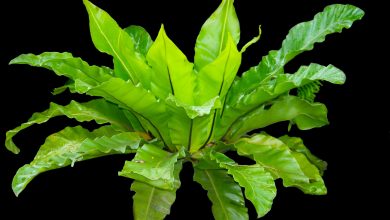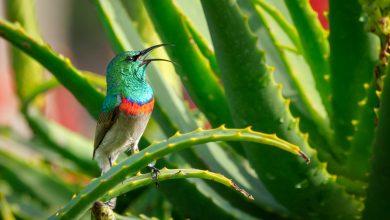A Guide to Sunflowers

Flowers play an essential role in providing many edible options, as well as add a pleasant view of the scenery. There are many kinds of flowers that are commonly found everywhere. The flower has a scientific name Helianthus Annuus. Sunflowers develop best in areas with full sun. They are amazingly extreme and will grow in any sort of soil as long as it isn’t waterlogged. They do fine in soils that are marginally acidic to fairly antacid (pH 6.0 to 7.5). They are so natural to develop that they frequently plant themselves, jumping up unbidden underneath a flying creature feeder.
Sunflower seeds, leaves, and stems radiate substances that hinder the development of different individual plants. They ought to be isolated from potatoes and post beans. Where sunflower seeds are generally utilized as winged animal feed, poisons from the gathered seed structures inevitably slaughter the grass beneath.

Characteristics of Sunflowers:
Sunflowers are famous for their essential benefits; primarily, they have delivered many healthy edibles like useful cooking oil, bird seeds, and other snacks. If we start to enlist the features and benefits of sunflowers, it will take a long time to cover up this topic. Let’s start with the characteristics of sunflowers.
1. They’re originated from America.
Many vegetables and other essential grains are originated in America. Sunflowers are one of them. The history of cultivation is ancient, and its roots are found in 3000 BCE. The old people also used to prepare different things with it like oil, medicine, and food. It was exported by Spanish conquistadors who used to export it to the whole world.
2. Their popularity stands the test of time.
Russian outsiders to the United States in the nineteenth century brought back exceptionally created sunflower seeds, and these seeds are essential for developed and more fabulous sprouts and started a recharged eagerness for the Native plant. Moreover, American sunflower creation also detonated when the Missouri ranchers started to deliver sunflower oil in 1946. Canada also revealed a mechanical seed-pulverizing plant, and during the 1970s, shoppers searched for low-cholesterol options in contrast to animal fats.
3. Sunflowers require direct sun.
The followers do not just resemble the sun; they need a ton of it. They develop best with around six to eight hours every day, except more is stunningly better. They can grow as tall as 16 feet, although numerous assortments have been created to flourish at various statures. Blooms planted excessively near one another will contend and not bloom to their maximum capacity.
4. The sun greatly affects the plant.
Sunflowers properly need the sun. It also rotates as the sun moves. Most of the photographers also try to shoot the movement of the plant, and for that, they spend days only to get the perfect video shot.
5. The world’s tallest sunflower.
The tallest and considerably biggest flower reaches 30 feet high and one inch wide.
6. They have the best use in medicine.
In Mexico, the blooms were thought to soothe chest torment. Various Native American clans concurred with the plant’s restoring properties. The Cherokee used implantation of sunflower leaves to treat kidneys while the Dakota brought it out to soothe chest and heart pain.
7. They are thousands of tiny flowers.
Every sunflower’s head is made of little blossoms. The petals we see around the outside are called beam florets, and they can’t imitate. Yet, the plate blooms in the center, the accurate location where both sex organs of the plant are located, and each of them can produce seed. Furthermore, they can self-fertilize or take dust passed up the breeze or shipped by bugs.
8. They can be used as scrubbing pads.
When the blossom heads are vacant of seeds, they can be changed over into dispensable scouring cushions for employments unreasonably extreme for your cleaning instrument.

Variations of Sunflowers
If we discuss the types or varieties of sunflowers, it can be devised into four main types included:
- Mammoth
- Autumn Beauty
- Sunrich Gold
- Teddy Bear
Mammoth
If you want to grow a fast sun forest for your house or kids, it’s the best and most excellent option because of its quick-growing ability and many other benefits. It has an astonishing mammoth legacy sunflower with huge blossoms, up to one foot and over. The large yellow flowers with the dark-colored focus top grow 9 – 12 ft. Tall and yield overwhelming heaps of seeds. Quick and straightforward to develop, Mammoth sunflowers are incredible significant yearly support of a screen. Sow in the spring after the last regular ice date. When around three inches tall, seedlings ought to be diminished to two feet apart. Consumable seeds pull in winged creatures and make curious tidbits. To spare seeds, cut the stem underneath bloom heads when the backs of the blossom heads turn yellow. Hang topsy turvy and let dry in a cool, dry spot for about a month. Spread with mesh or a paper sack with openings to prevent seeds from falling. In any case, keep an eye out for squirrels!
Autumn Beauty
The Autumn Beauty Sunflower is sorted as a yearly blossoming plant, implying that each plant will develop rapidly from a single seed, sprout lavishly through the late spring months, and later kick the bucket with the first killing ice. Whenever shielded from squirrels and different creatures, the blossom heads will deliver a lot of seeds, which can be culled and put aside for the accompanying developing season. These ravishing plants will remain to a develop stature of five to eight feet tall, showing their enormous, spade formed leaves. The blossoms themselves will open up four to six crawls in measurement, uncovering a profound, chocolatey dark-colored focus.
Pre-winter Beauty sunflower plants will make an extraordinary cut rose for some bundles and decorative designs too. They produce numerous branches, enabling you to remove a bunch of quick sprouts at some random time. These vibrant blossoms are likewise known to draw in a variety of advantageous creepy crawlies to the nursery too – for example, butterflies, honey bees, hummingbirds and bumblebees. Since the Autumn Beauty Sunflower will develop to such a tall stature, it is prescribed to plant and improve them along wall and garages, or by the majority in a naturalized setting.
Sunrich Gold
The Sunrich arrangement of crossbreed sunflowers was reproduced in view of the flower vendor exchange. These are profoundly uniform annuals that develop in 60 to 70 days from direct planting, delivering a solitary, upstanding stem, about four to five feet tall. The blossoms are exceptionally round with thick quantities of petals, yet the blooms produce no dust, so they won’t make a wreck when they’re cut and brought inside. They make incredibly brilliant, durable cut blossoms, with sprouts four to six inches over.
Sunrich Gold sunflower seeds produce extraordinarily uniform blooms with thickly stuffed brilliant petals encompassing a green plate. They look excellent in the nursery, however conceivably stunningly better as cut roses for wedding bunches or general enrichment.
Teddy Bear
Only two to three feet tall, this little sunflower is ideal for small gardens and compartments. The fleecy, profound gold, five inch blooms keep going for quite a long time in a jar.

Taking Care of Sunflowers
- While the plant is little, water around the root zone, around three to four inches from the plant.
- When the plant is set up, water profoundly, however, inconsistently to energize profound establishing. Except if the climate is especially wet or dry, pool once every week with a few gallons of water.
- Feed plants just sparingly; over-fertilization can make stems cushion in the fall. You can include weakened compost into the water; however, abstain from getting the manure close to the plant’s base. It might assemble a channel around the plant around 18 crawls out.
- Tall species and cultivars need help. Bamboo stakes are a decent decision for any plant that has a solid, single stem and needs support for a brief timeframe.

Developing and Caring for Sunflowers
Figuring out how to establish sunflowers isn’t troublesome – they nearly develop themselves. Also, when sunflowers start to grow, they grow rapidly. Sunflower care just requires a couple of fundamental developing tips.
Water need
Even though sunflowers require a great deal of water to sprout, they just require an inch of water for each week during the developing season. Utilize a watering spout to effortlessly water once every week until the main six creeps of soil are clammy.
Fertilizers
If you arranged your dirt with fertilizer or potentially excrement, you shouldn’t require additional preparation during the developing season. If you feel your plants need better nourishment, you can work a reasonable, slow-acting granular manure into the dirt encompassing your sunflowers. Sunflower composts are accessible in a couple of nursery focuses. However, an essential fertilizer is all you need.
Control Weeds
One of the best sunflower challenges is weed control. Weeds contend with sunflowers for dampness and nourishment. Except if you need to till, tool, or draw plants by hand, you’ll need to put down a liberal layer of mulch to battle weeds. Indicate a four inch layer of natural mulch to your sunflower garden. Leave a territory of exposed soil around every sunflower stalk to help dissuade irritations and malady.
Supervise Pests and Disease
Though numerous bugs love sunflower plants, the harm is typically insignificant. By and large, bug sprays are a bit much, except if prejudice is extreme. A few nuisances you may experience are:
- Sunflower moths
- Cutworms
- Weevils
- Caterpillars
- Grasshoppers
- Wireworm
- The slimy sunflower parasite
Illness is a significant hazard; however, it, for the most part, influences ranch crops. New assortments of sunflowers have protection from numerous infections. When illness happens, the main alternative is to evacuate and pulverize the influenced plants. The possible disease could be:
- Verticillium wither
- Sclerotinia spoil
- Rust and fleece mold
Your best anticipation is a legitimate plant separating in well-depleting soil. When developing seeds for collecting, flying creatures can turn into an issue. Scarecrows, owl imitations, and glossy metal pie plates can help discourage winged animals. You can likewise plant-specific oil-rich cultivars, for example, Black Peredovik, to get winged creatures far from your seed sunflowers.

Design Ideas for Sunflowers:
Here are some of the most exciting design ideas for sunflowers; let us discuss them one by one:
Use in the Garden
The surprising fact about sunflowers is that they can be grow in any type of soil. If you take care of the soil before harvesting them, it will be beneficial to the plant as well. You can quickly grow them in your garden, but the garden should face direct sunlight for at least seven to eight hours per day.
Prepare a Sun Forest
The mammoth sunflowers are famous for fast growth, so most of the people use it for a sun forest. The tall plants give the image of the forest and present the best area for kids.
Grow in Kitchen Garden
It can be grown in your kitchen garden. Sunflowers will give you the warm and active vibes that any other flower might be able to give.

FAQs about Sunflowers
Is there any damage to eating the sunflower seed shells or bodies?
The bodies are mostly fiber. Eating a ton of the frames could make one become affected. If not bit appropriately, the sharp bits of the shell might cut or append the linings of the throat or stomach related tract. Restorative writing affirms various cases in youngsters where impaction has happened because of eating sunflower shells.
What number of blooms or heads does the sunflower plant have?
The developed sunflower has just one blossom or head. Be that as it may, the wild cousins discovered forming in the trench and different territories all through a lot of North America have various flowers and heads. Products of 20 and more heads are standard. The ‘wilds’ are the hereditary premise of the present tamed sunflower.
What is sunflower oil utilized for?
Sunflower oil is light in taste and appearance and supplies more Vitamin E than some other vegetable oils. It is a blend of fats named monounsaturated and polyunsaturated along with low soaked fat levels. Sunflower oil is esteemed for its light taste, fricasseeing execution, and medical advantages.

Fun Facts of Sunflowers:
- Sunflower is the national bloom of Russia and the state blossom of Kansas, USA.
- Sunflower is striking for going to confront the Sun, conduct known as heliotropism.
- Sunflowers were developed by Native Americans well more than 1,000 years back.
- Sunflower heads comprise of 1,000 to 2,000 individual blossoms consolidated by a repository base. The large petals around the edge of a sunflower head are single beam blossoms that don’t form into the seed.
- Sunflower seeds have heaps of calcium and 11 other significant minerals. They do have half fat, yet it is generally polyunsaturated linoleic corrosive.
- Wild sunflower is profoundly stretched with little heads and little seeds, as opposed to the single-stem and huge seed head of tamed sunflower. Sunflower aromas are additionally famous.

Sunflower is a Native American flower. It can be used in medicine, food, and making different oils. It has many types, and each type has specific qualities. It might tough to grow it, but it can grow faster once it gets a pleasant atmosphere. The follower can rotate along with the sun and require at least eight hours of sunlight for growth.



